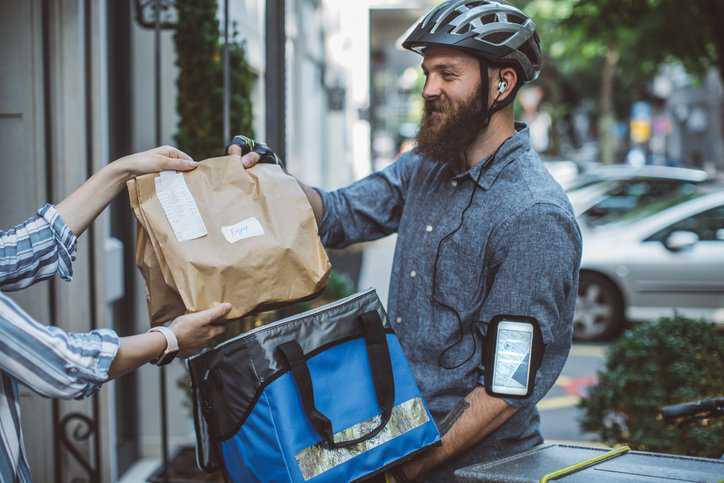IWA 36:2022 Contactless Delivery Services

The online food delivery market worldwide is projected to grow by 9.49%, resulting in a market volume of $1.92 trillion by 2029. Simply put, the contactless delivery industry is here to stay. IWA 36:2022 Guidelines For Contactless Delivery Services establishes specifications for contactless delivery services.
How Does Contactless Delivery Work?
Contactless delivery eliminates any other form of physical contact, such as the hand-off, sign, or exchange of goods, between the deliverer and recipient. For example, as detailed in IWA 36:2022, a contactless delivery service will leave your food order at your doorstep/door, lobby or another pick-up point; or am alternative fulfilment methods like smart lockers. Often, the recipient will be able to track the delivery and will receive a text notification upon its arrival.
What Is IWA 36?
IWA 36:2022 provides general guidance on issues to be considered in standards related to contactless delivery services. It defines contactless delivery as the “delivery of goods to the consumer or recipient without direct contact or human involvement throughout the delivery process.” The standard covers general principles, roles and responsibilities, delivery methods, service processes, quality control, and improvements to be put in place to execute contactless delivery services.
IWA 36:2022 applies to the following:
- Instant delivery, which generally applies to the retail, catering and medical sectors (including online food delivery, grocery delivery and medical supplies delivery)
- Last-mile delivery with intermediate transfer, which generally applies to express and e-commerce fields (referring to the last-mile delivery of parcels).
This standard does not apply to cold chain logistics.
The Growth of Contactless Delivery
The spread of the COVID-19 pandemic resulted in the launch of contactless delivery services and a subsequent shift in consumer behavior. Initially, contactless delivery was a preferred safety precaution rather than a necessity. Post-pandemic, 32% of consumers are leaving their home less often; today, contactless delivery is a consumer expectation.
This notion is further illustrated in a study that found even after the pandemic, more than 60% of consumers intend to continue using contactless services, and another study found that 13% of consumers are ordering food for delivery more often post-pandemic. In terms of restaurants, over 80% of restaurants are turning to technology—like online ordering, reservation and inventory apps, and restaurant analytics—to help them run their business successfully and efficiently. Additionally, 60% of full-service operators say online food delivery represents a bigger share of sales than in 2019.
Market trends also show that people are consistently choosing contactless options, as there has been a staggering 40% increase in contactless payments, underscoring the growing consumer demand for contactless delivery services. Also, interestingly, U.S. e-commerce grew an astonishing 44% in 2020—the highest annual U.S. e-commerce growth in at least 20 years. In 2024, the average revenue per user (ARPU) in the grocery delivery market is projected to be $452.40, and in the U.S. alone the revenue in the online food delivery market is forecasted to reach $1.22 trillion in 2024.
IWA 36:2022 Guidelines For Contactless Delivery Services is available on the ANSI Webstore.






